Figma is one of the most used design tools in the app development world. It can significantly improve the app design process and can even outperform other popular design tools in UX/UI design. But how? Why? We’ll let you know in a bit.
Most of us remember how different the world was before smartphones and tablets. We had to carry calculators to school, read encyclopedias to do homework, and go to the library to study for tests. We had to manually write stuff on our calendars and use our parents’ landlines to make phone calls. The reality was that there were no apps for anything! Now, we can’t conceive the world without our precious smartphones and the little pieces of functionality within them. We went from playing Snake on our Nokia 3310s and sending messages using BBM (BlackBerry Messenger) via our BlackBerries to making full-length HD movies using our iPhones. And thanks to what? Or better yet, thanks to whom? App developers. Yes, technically, Snake was an app, but it wasn’t until Apple released the first iPhone and revolutionized the app market with the birth of the App Store back in 2008 that the development industry really took off. And what became the main differentiator between Apple and the rest? Design. Apple made apps look way better than its competitors, and the design element became really predominant after a while. Today, UX/UI design is an integral part of the app development process. Tools like Figma not only make our jobs easier but help us consistently deliver the best possible products to our users.
Before we get into the ins and outs of Figma, and before you ask, no, this article is not paid for or sponsored by Figma. We simply consider it one of the most robust and indispensable tools for UX/UI design currently on the market, and we wanted to share why we use it and why we love it so much. So, let’s begin.

What is Figma?
App development has come a long way since its Snake/BBM days. Today, we have a sea of tools available at our disposal to make our UI/UX designers as happy as kids in a candy store. However, quantity doesn’t equate to quality, and only a handful of frameworks are robust enough to become our go-to tools and earn the trust and devotion of our designers. One of those tools is Figma.
Founded by Dylan Field and Evan Wallace in 2012 in San Francisco and released in 2016, Figma is a collaborative web-based application with design-oriented features that offers a wide variety of prototyping and editing tools used for user experience and user interface design. On top of that, Figma can also be used for a wide array of other graphic design-related work, such as social media posting and wireframing, making it the perfect tool for all design activities. That being said, one of Figma’s most revolutionary elements and what sets it apart from other UX/UI designing tools is the fact that it works straight from your browser, and it’s free! You can access all of Figma’s functionalities and projects from any computer or browser. As a result, you can quickly work from anywhere and anytime without purchasing expensive licenses or downloading and installing any software. More on this later.
Figma is a robust, powerful platform that successfully combines the benefits of a web-based design tool with the best features of other design applications such as InVision, Zeplin, and Sketch. However, these design tools, which reigned supreme for a while, are slowly being overshadowed by Figma, which, since 2019, has been gaining momentum, making up in spades for what the others lack in versatility, accessibility, and user-friendliness. In fact, Figma currently has a market share of over 31%, more than doubling InVision’s 12.28% and Adobe XD’s 14.82%. Moreover, in one study, the number of surveyed users who claimed to use Figma rose from 20% in 2018 to 77% in 2021, a figure which has undoubtedly increased by now. Meanwhile, users who opted for Sketch went from 70% in 2018 to a mere 29% in 2021. Furthermore, the same survey shows that Figma is the uncontested leader for prototyping, with 54% of users making the web-based tool their first choice, while only 3% went with Sketch and 4% with InVision.
Additionally, Figma is so versatile that even IT behemoths like Microsoft can’t live without it. The popular design application has become so pivotal to Microsoft’s design team that their corporate vice president of design and research, John Friedman, compares Figma to water and air in an attempt to put into words their love for it. And, if that wasn’t enough proof of the tool’s popularity and staggering rise in adoption, Adobe recently announced that it had entered an agreement to purchase Figma for $20 billion in both cash and stock, merging two of the design market leaders into what will indeed become the best collaborative design tool of modern history. It’s like they say: if you can’t beat them, join them.
We at Foonkie have used Figma for years now, and we absolutely love it! But why do we love it so much? Why has it taken over the design world by storm? And why is it becoming the go-to UX/UI design tool in the app development industry? Here are the ten reasons why we consider Figma the best UX/UI design tool for app development.

1. Figma is web-based
The fact that Figma is browser-based is its first and foremost differentiator. Unlike other tools, which require hefty installations, cumbersome patching, and annoying software updates, Figma works by simply accessing it on your favorite browser and login into the site, making it extremely easy to use, accessible, and straightforward. You can work on your projects on any computer with any operating system without restoring your purchases or downloading copies of your files manually. Moreover, since Figma is cloud-based, any work you do on your files is automatically saved, and you can easily share it with your peers by simply sending them the link to access the project. But, if you happen not to have a network connection, your progress is saved as a draft and automatically saved once you can access the internet. As a result, Figma helps you simplify version control and enables teamwork and project collaboration in the most seamless way possible.
However, if using your browser to access your projects isn’t your thing, or if you don’t have access to an internet connection, Figma also has a Windows and iOS-compatible app. You can download this app to your desktop or smartphone (yeah, that’s right) if you want a more native designing experience or don’t have a network connection. However, if you choose to stick to the browser version, you’ll still be able to access all the same features and work on your project the same way you would on the app, so you’re set either way!

2. Figma has a very robust free plan
Yes, you read that right: Figma has a very robust free plan where both the desktop/mobile and web-based applications are virtually free to use. Of course, they have paid plans, but their free version lasts forever, gives you unlimited files, unlimited collaborators, three Figma and FigJam files, access to their library of multiple plugins, widgets, and templates, up to thirty days of history viewing, commenting, and more. Having access to all of these features in a free version is impressive and is one of the reasons we love Figma so much.
Figma’s free version allows you to learn and experiment without spending a penny, so it is perfect for small or simple app development projects, beginners, or those who simply want to test the web-based app. However, for most app developers who work with sizable projects or other professionals who need a broader range of tools, Figma offers a pro version for $12 per editor per month with unlimited projects, files, and version history. This package also has team component libraries, audio conversations, and Slack integration, and it’s free for students and educators. Also, for organizations, Figam offers a $45 per editor per month plan with admin and management options for most enterprise-grade needs.
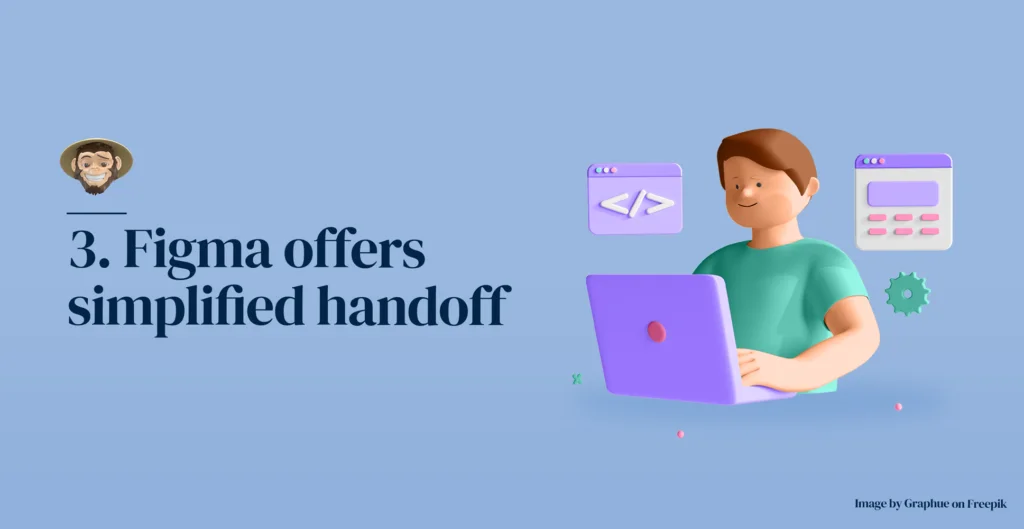
3. Figma offers simplified handoff
One of the biggest challenges we used to face before Figma was developer handoff. Once a project’s UX/UI design is ready, you need to hand it off (hence its name) to your coding team so they can start implementing it in code. This process isn’t always straightforward because there aren’t a lot of platforms or systems that service both needs simultaneously. As a result, you must use third-party tools such as Zeplin or InVision to ensure the handoff process goes smoothly. Enter Figma.
Figma enables collaboration between UX/UI designers and developers via the inspect tool. This tool allows UX/UI designers, developers, and any other collaborators to view, modify, create, and copy elements, properties, and code from Figma designs seamlessly. Figma also displays code snippets on all objects or frames in CSS, iOS, or Android formats, allowing developers to inspect any design component. All you have to do is share the link to the project file. By accessing this link, developers and any other collaborators can access all the elements, comments, prototypes, and design iterations and start doing the necessary code implementations from these elements. As simple as that!
Of course, the handoff process can’t rely solely on sharing a file on Figma. For one, it’s crucial you have a design system, a collection of organized and reusable standards that help guide the development process of mobile and software apps. You must also ensure your team of UX/UI designers always communicates with developers so there are no gaps that can hinder wholesome product development. Luckily, Figma enables seamless communication between parties, either via comments or Slack integration, which takes us to our next point.

4. Figma offers a real-time collaborative environment
For us at Foonkey Monkey, the idea of teamwork is an essential principle of our work methodologies, hence our love for Figma. The web-based UX/UI design platform aligns perfectly with our teamwork maxim in that it makes collaborative UX/UI design a straightforward and pleasant process. Figma has a collaboration feature where multiple designers can work on a single project in real-time and can edit, comment, discuss, view who’s working on what, track changes, and modify the file as they see fit, all remotely and without the need for in-person meetings or having to send or share heavy files via email. Think of Google docs; the principle is the same, all you need is an internet connection, and voilà, you have a collaborative UX/UI design tool at your disposal.
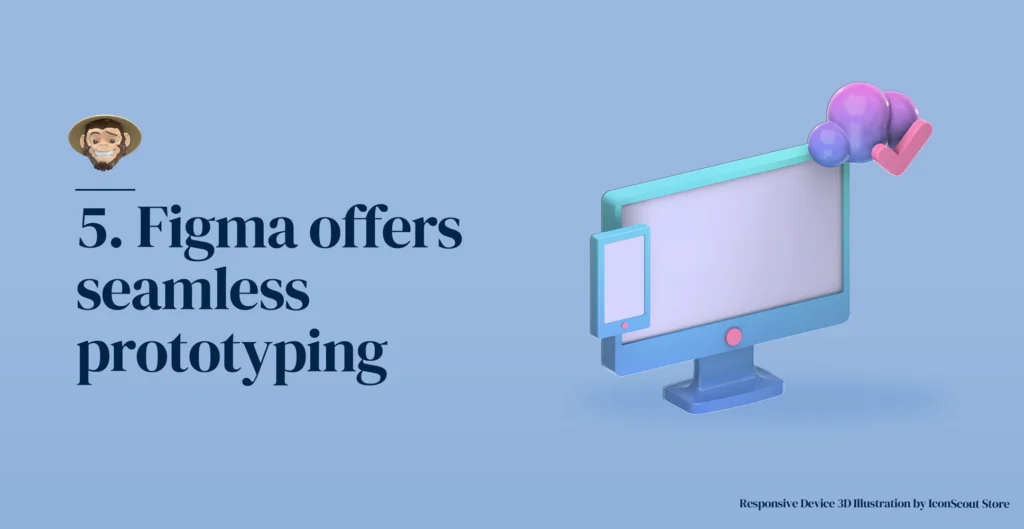
5. Figma offers seamless prototyping
As you may already know, prototyping is crucial to test UX/UI designs and validate ideas without having to develop a full-fledged product and then spend a lot of time and money making countless modifications. That being said, prototyping isn’t always a straightforward process that, without the proper tools, can be difficult to ace. Thankfully though, Figma makes prototyping a seamless and straightforward procedure. It is the app’s second main functionality and is highly user-friendly, has a short learning curve, and puts a wide variety of tools and functionalities such as smart animations, advanced overlays, transitions, scrolling and hovering interactions, auto layout, and many plugins, among others. You also have access to countless screen presets, and you can use the Figma Mirror app to view your designs on your mobile phone in real-time, which is extremely useful for mobile app developers. On this, surveys have shown that Figma is the leading tool for prototyping, with 54% of UX/UI designers preferring it, followed by Sketch with 3% and InVision with 4%.
So, if you’re like us and seamless prototyping is a pivotal part of your development and UX/UI design processes, then Figma is the perfect tool for you. That being said, it isn’t the only application on the market for prototyping. It is, however, the only tool that brings prototyping down to a level where anyone can use it and learn it hassle-free, making the UX/UI design workflow easy to understand for ordinary people, app developers, and our clients.
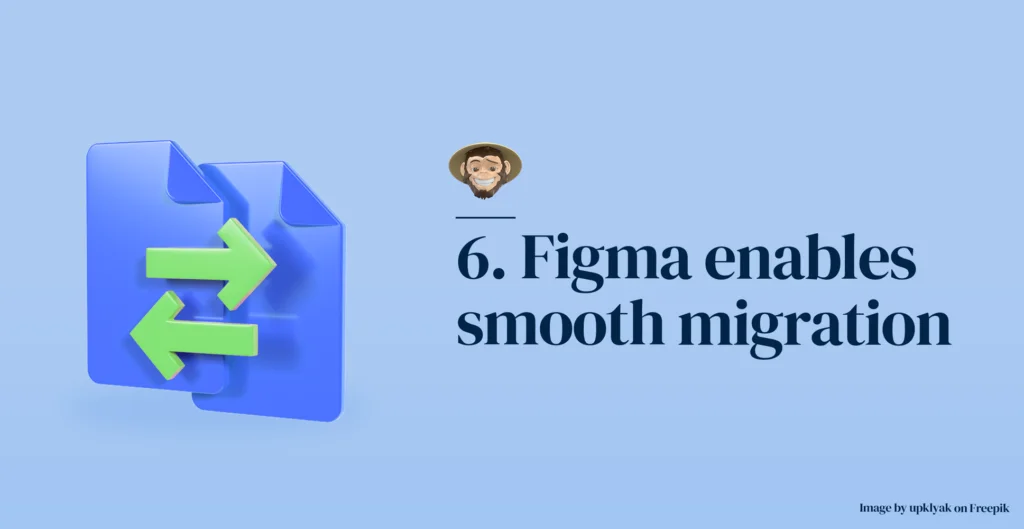
6. Figma enables smooth migration
We’ve all been there: you want to use new platforms but don’t want to deal with the annoyances and inconveniences that often come with said change. So, if you’re currently using other UX/UI design tools and want to transition to Figma but are worried it will be a cumbersome process, fret not; Figma makes it possible for you to import all of your projects without any issues, glitches, or losses. No, there’s no “Migrate” button that magically does everything for you, but there are countless plugins and drag-and-drop features that help convert most components and make the process as easy as it can be. And, if you’re migrating from Sketch, Figma actually does offer an “Import” option that allows you to instantly migrate all your individual Sketch files into your brand new Figma account.

7. Figma allows for countless integrations
Chances are you are used to employing many different tools and platforms as part of your day-to-day design and development operations. The good news here is that you can integrate most, if not all, of your favorite tools with Figma. The web-based UX/UI design platform allows you to work in a centralized, collaborative space where countless tools meet to create a unique, customized workflow that functions only for your team. Figma seamlessly integrates with the following:
- Communication and collaboration: Microsoft Teams, Slack, Trello, Dropbox, Jira, Coda.
- Prototyping and testing: Flinto, Protopie, Bubble, Framer Web.
- Developer handoff: Zeplin, AWS Amplify Studio, GitLab.
Additionally, Figma has developer APIs that allow you to integrate several elements, such as real-time displays, with any browser-based app. For instance, the people at Jira have implemented a Figma add-on to allow UX/UI designers, product owners, and developers to access the latest version of all prototypes or mockups from the designer team. This way, Figma promotes proper integration and enables real collaboration between team members and their favorite tools and applications.
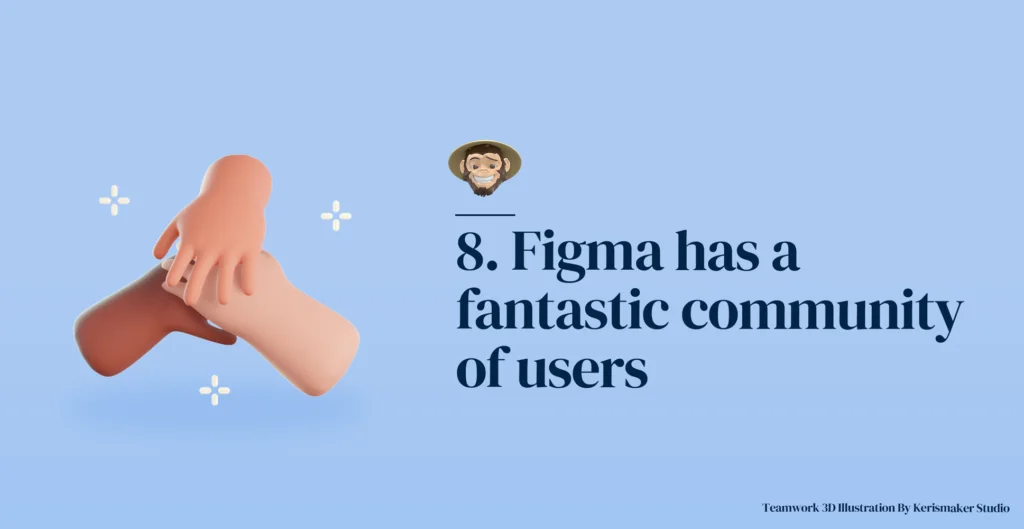
8. Figma has a fantastic community of users
Figma has single-handedly built one of the most extensive and most collaborative communities of designers, developers, and amateur users in the market. Members of this community support other users and help them with their projects by providing documentation and tips. They also create amazing plugins and share their work and projects selflessly. Furthermore, both these plugins and projects are fair game. They are open and accessible for other users to view and use as they please. You simply take what you like, copy it to your project, make any changes according to your project’s specifications, and you’re all set!
Figma’s community members can also use and share countless templates, design systems, animations, illustrations, buttons, icons, and much more without asking for a single penny in return.

9. Figma has FigJam!
As we said earlier, teamwork is a non-negotiable part of any modern, innovative UX/UI design team, especially now that the pandemic has left some of us working remotely. For most design and development teams, remote or not, access to cloud-based collaboration tools has become vital, and Figma knows this better than any other company. They have their own whiteboard collaboration tool called FigJam, where designers can brainstorm, catalog, communicate their ideas, and build and coordinate projects across all disciplines and departments from anywhere and anytime. You simply choose one of their many templates, create a workflow that accommodates all your necessary elements (schedules, timelines, etc.), share the file with your team, and you’re all set!
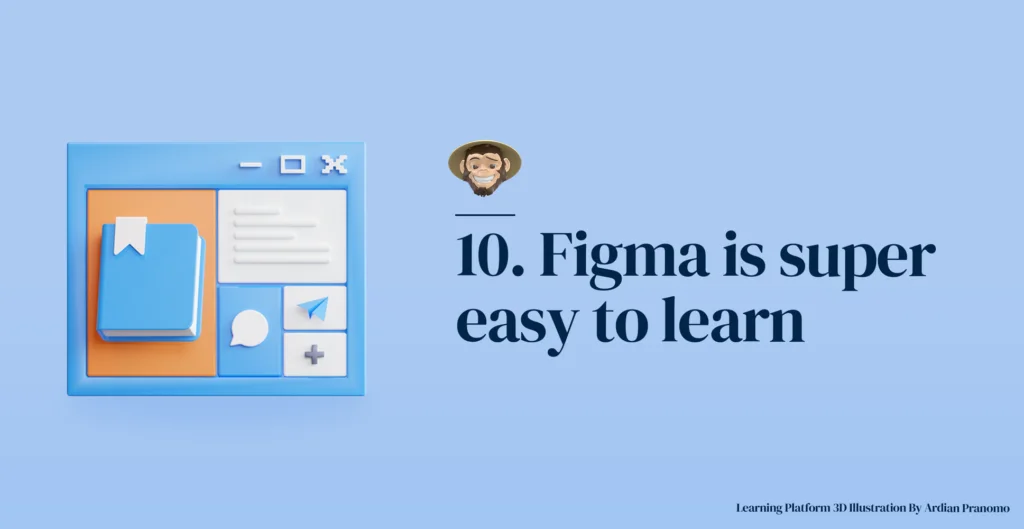
10. Figma is super easy to learn
And last but not least, we love Figma because it’s super easy to learn. Let’s face it, not every designer or developer in the world, no matter how professional they are, knows how to use every single tool, program, and platform out there. That being said, mastering as many tools as possible in an increasingly competitive industry such as ours is a bonus, which is why programs with short learning curves stand out. Figma just so happens to have one of the shortest learning curves in the market. So, if you’re keen on getting started with Figma, be confident that you’ll surely be mastering the web-based UX/UI design tool in no time!
So there you have them, ten of the many reasons we absolutely love Figma. And we’re sure we are not the only ones. In fact, the design tool has become so popular and loved in the design industry that, as we touched on earlier, Adobe recently announced they would be acquiring Figma for $20 billion. But what will happen with this purchase? Will things change?
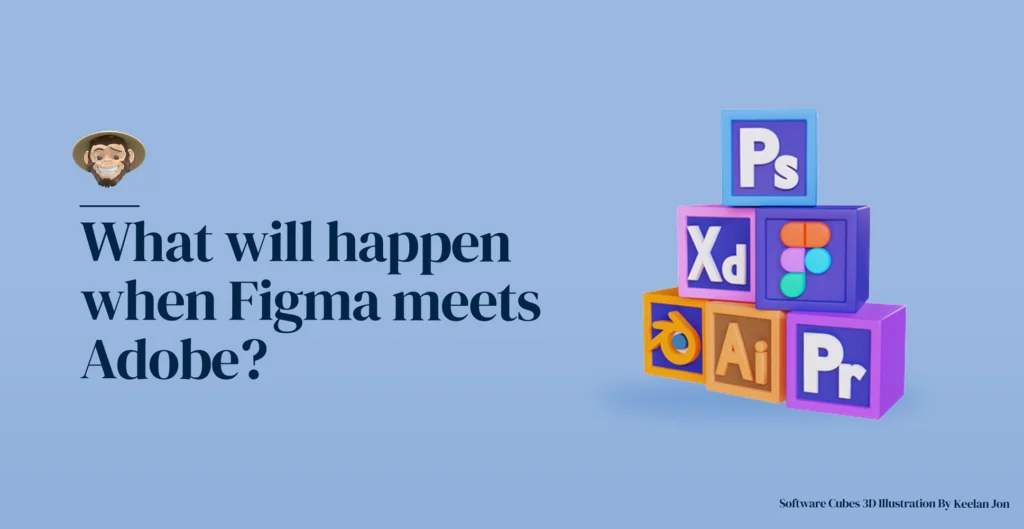
What will happen when Figma meets Adobe?
In a move to control the lion’s share of the creative design application market, Adobe took yet another competitor off the market. This time, it’s Figma’s turn to take permanent residence under the design giant’s wing and become another weapon in Adobe’s creative arsenal, a move indeed made to reinforce their web and collaborative capabilities, which have never been the company’s strong points. At any rate, the merger appears to be a move on Adobe’s part to create a community of designers and developers with all the tools to build innovative and long-lasting products. On this, Adobe said in a press release:
“Together, Adobe and Figma will reimagine the future of creativity and productivity, accelerate creativity on the web, advance product design, and inspire global communities of creators, designers, and developers. The combined company will have a massive, fast-growing market opportunity and capabilities to drive significant value for customers, shareholders, and the industry.”
Nonetheless, as with any significant change, the merger may make some of Figma’s most diehard fans a tad weary, and rightfully so. For one, Figma already owns a big chunk of the creative market, so for Adobe, buying Figma makes sense; they have everything to gain. Not only will the software giant bridge some gaps they currently have in terms of web-based capabilities and innovation, but it will also be gaining a very loyal and creative user base. Figma, on the other hand, stands to gain more notoriety and status by becoming a cog in the successful machine that is Adobe. However, it also risks getting lost in oblivion. Let’s face it, Adobe’s purchase is all about getting rid of the competition. We’ve seen it before when the design behemoth purchased Macromedia, and it slowly faded into Adobe’s portfolio until they eliminated it altogether. So, there’s a genuine concern the same will happen to Figma. Nonetheless, considering Adobe’s success as the market leader in all things design, you’d think they can spot a good thing when they have it, so it’s only logical that they’d be smart enough to keep Figma as it is and slowly fade Adobe XD, not the other way around.
Moreover, as you already learned, one of Figma’s primary differentiators is that it’s virtually free, as opposed to Adobe’s apps which often come with a heavy price tag. So, in that sense, we wouldn’t be surprised if Figma became one of Adobe’s Creative Suite apps, just like Photoshop and Lightroom are. So, the question arises: will Adobe eliminate Figma’s free features once it enters its portfolio of products? It seems likely, but I guess we’ll have to wait and see.
Still, the people at Adobe seem to be aware of Figma’s popularity and promise nothing will change. Scott Belsky, Adobe’s chief product officer and EVP of Creative Cloud, posted on LinkedIn:
“How’s this gonna work? Figma will operate w/ autonomy, continuing to work their magic, no plans to change prices, and will also continue to be free for education. we’re eager to preserve what’s great, and tackle some of the new possibilities together.”
On his part, Figma co-founder and CEO Dylan Field said in a press release:
“We plan to continue to run Figma the way we have always run Figma – continuing to do what we believe is best for our community, our culture and our business. Adobe is deeply committed to keeping Figma operating autonomously.”
The Figma-Adobe merger should close in 2023 after all legal and regulatory inspections have been finalized. Once it’s done, we’ll start seeing what both companies will become and if each of their promises is kept. For now, we Figma lovers can only speculate and cross our fingers that nothing will change, and if anything does, we can only hope it’s for the best. So, do we need to be concerned? Who knows. The truth is that Adobe could help Figma become more widespread and feature-rich, but hopefully, that won’t come with a price. Be it as it may, I guess this is another one of those wait-and-see scenarios.
If you have any input regarding this article, have any questions or concerns, or want to work with a Figma-loving company like us, don’t hesitate to contact us!
